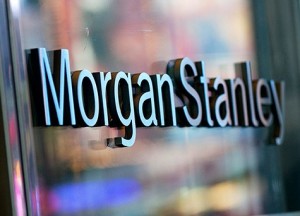The mid-market gap is probably here to stay – Richard Elston, CMC Markets, talks Prime of Prime
“Liquidity provision for CFDs is still underserved so we will be looking to continue growing our position here”, says Richard Elston, Head of Institutional, CMC Markets.

FinanceFeeds continues to look for incisive forecasts with regards to the prime brokerage sector in 2017. Last year was in many respects the year of Prime Brokerages, particularly in London, which saw an influx of newly founded prime brokerages and firms offering liquidity. As big banks curtail credit and deleverage in an effort to comply with more rigid capital and liquidity demands, requirements regarding their mid-size clients are getting stricter. What will prime brokers do in these circumstances?
Today, FinanceFeeds spoke to Richard Elston, Head of Institutional, CMC Markets, who kindly agreed to share his view on what awaits the PB sector in 2017.
The need for better definition
We started our talk with the somewhat trivial question concerning the trends that dominated the prime brokerage segment in 2016 and whether they would remain in place in 2017. In response, Mr Elston noted the diversity of products on offer – a diversity so multi-facet that it requires a new and better definition for the prime of prime space.
“We saw some great steps forward in 2016 with the evolution of the so-called prime-of-prime brokers providing new routes to liquidity, but this space desperately needs to become better defined”, Richard Elston, Head of Institutional, CMC Markets.
“The phrase seems to have become something of a band-wagon, with many providers claiming to be operating in this space, when the reality is there’s little consistency in terms of the actual products offered”, he explained further.
“Critically I believe the broker community will start to demand better transparency in terms of what flow they are being presented with from prime of prime brokers, along with auditable price data. Pricing transparency is something that CMC Markets already takes very seriously”, he added.
The mid-market gap (revisited)
We asked Mr Elston to elaborate on the view he expressed in a previous interview with FinanceFeeds, when he talked about the mid-market gap in which CMC Markets fits very well.
“The mid-market gap is probably here to stay for the foreseeable future, even if we do see some further evolution in terms of regulation” – Richard Elston, Head of Institutional, CMC Markets.
“Over the last 18 months we’ve really noticed the market supporting the idea that having more bespoke relationships with counterparties, rather than trying to aggregate everything together on a standardized set of terms, is the preferred route. It allows a better understanding of the counterparty risk and the relationship can be built around this accordingly”, said Mr Elston.
“Liquidity provision for CFDs is still underserved so we will be looking to continue growing our position here”, he added.
Political factors
FinanceFeeds next asked Mr Elston to share his opinion on any “macro” factors (from the realm of politics) that may shape the future of the PB industry.

Mr Elston said: “There can be no doubt that Donald Trump will be pushing a pro-business agenda during his time in office and it has been suggested that this could include repealing the Dodd-Frank act. This wouldn’t be an easy task to achieve, but arguably just a strong suggestion that it might happen could be sufficient to initiate a fresh wave of change in terms of liquidity provision.
There might not be all that much scope for this to filter through into markedly lower prices for prime broker services, but regardless of this, banks will be wanting to ensure they are adequately remunerated for the risk. Anything that increases the overall availability of liquidity can only be good for the quality of the market.”
“The UK’s exit from the European Union also has the potential to add an additional dimension here, although given the legislative timeline we are facing here, it’s fair to suggest that any resulting changes will have to wait until the medium term”, he added.
OTC operators vs Exchanges
FinanceFeeds then asked Mr Elston on CMC Markets’ position to combat the lobbying of exchanges against the CFD sector.
“OTC products will always have one major advantage over those traded on exchange – and that’s the cost. You’re taking out a whole swathe of additional fees, clearing overheads and risk by working directly with the client. So as long as the OTC operators champion an agenda of transparency when it comes to pricing and continue to manage risk in a diligent way, then it should ultimately be the clients who get to decide how their orders are executed”, said Mr Elston.
“Certainly it seems fair to say that the political desire for a regulatory overhaul – such as one that would be seen as trying to push the existing OTC business to on-exchange models – in the two major financial trading nations of the UK and the US is going to be somewhat lacking in the year that lies ahead”, he noted in conclusion.









